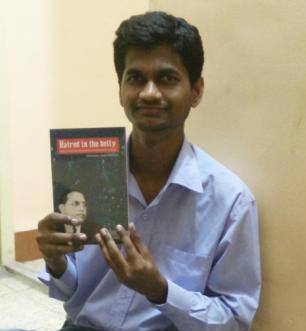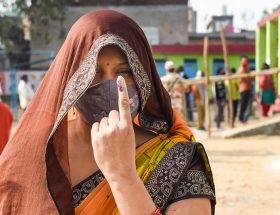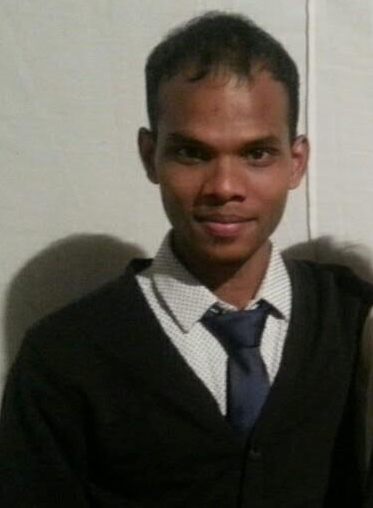Tejas Harad
 We don’t have to take special efforts to learn the language that’s spoken in our homes. Going to a school is not a precondition for a person to learn to speak and understand a particular language. But if one wishes to learn reading and writing, there is no option but to go to school. Our school system lays a stress on reading and writing. A student’s evaluation depends on a great deal on how well that student can read and write. Because if one wants to score good marks, a student has to read textbooks and write well in the examination. Therefore language becomes a crucial factor in education.
We don’t have to take special efforts to learn the language that’s spoken in our homes. Going to a school is not a precondition for a person to learn to speak and understand a particular language. But if one wishes to learn reading and writing, there is no option but to go to school. Our school system lays a stress on reading and writing. A student’s evaluation depends on a great deal on how well that student can read and write. Because if one wants to score good marks, a student has to read textbooks and write well in the examination. Therefore language becomes a crucial factor in education.
My mother tongue is Marathi and I also studied in Marathi medium school till 10th standard. But the Marathi I spoke at home, and the Marathi of the textbooks were not the same. Our dialect does not have the letter ळ (ḷa). In our dialect the word Kamaḷa (कमळ) is spoken as Kamala (कमल), Śhāḷā (शाळा) as śhālā (शाला) and bāḷa (बाळ) as bālā (बाला). The letter ṇa (ण) also doesn’t exist in our dialect. Therefore, phaṇasa (फणस) becomes phanasa (फनस) and bāṇa (बाण) becomes bāna (बान). I learned to pronounce the letter ळ by third–fourth standard. But by the time I learned to make the distinction between न (na) and ण, I was already in 9th standard. Some of my classmates never learned these extra letters. They probably did not even feel the need to. As with letters, it’s the same with some words. In my dialect lagna (लग्न) is lagīna (लगीन), rakta (रक्त) is ragata (रगत) and vihīra (विहीर) is ira (इर). Since the local dialect didn’t exactly match the textbook language, students faced a lot of problems.
This is an anecdote from the first year of my college. I was standing at the gate. A classmate seemed in a hurry to go somewhere. I asked her in Marathi, कुठे चाललीस? (can be loosely translated as ‘where you going?’) she did not understand the question. “what?” she asked in Marathi. I repeated the question. “Oh, where *are* you going? “(ओ, कुठे चाललीयेस?”) चाललीस नाही, चाललीयेस” she said stressing each letter of the word. I immediately realised my mistake. Inadvertently, I had spoken to her the way we speak in our dialect. Therefore, that poor Brahmin friend of mine didn’t understand what I was saying. It wasn’t her fault, nor was it mine. But I felt so embarrassed at that moment, I wanted to disappear.
Except few, all courses in my undergrad were in English. But since many students were from Maharashtra, we would talk to each other in Marathi as well. On the one hand, I would struggle to speak in English, on the other I would be careful not to let words from my own dialect enter my Marathi. I used to read Marathi newspapers and books regularly so I did not face much of a problem. But I have observed how difficult it was for my classmates and friends to speak and write in “standard” Marathi. I remember that once in the fourth standard, a classmate wrote the word māsakī (मासकी) from our dialect in his exam answer sheet instead of māśī (माशी) from the standard Marathi. Our teacher read out his answer sheet in front of the whole class. The whole class rose in uproarious laughter: I laughed too.
Textbook Marathi is the dialect of a certain section of the elite. But their dialect gets the honour of being called “language” while everybody else’s Marathi is only a dialect. Our local dialect is not very different from standard Marathi. Therefore, even though my classmates struggled, they did manage to adjust. But the dialects of people from Dahanu and Jawhar deviate a lot from the language of the textbooks. Students feel alienated by the textbooks, and face more problems if the teachers are not local.
If these are the kind of problems students face with their own mother tongue, one should not even ask about English. Many students study till 10th–12th standard and sometimes even till graduation but cannot read or write a single sentence in English. Nobody speaks English in the village. Things like English newspapers, movies, songs, books are not part of the village life. Many a time, the teachers who teach English are not fluent in the language themselves. Students manage to somehow get by with their broken English till standard 12th. But when they move to cities for higher education, where the whole syllabus is in English, they start facing greater difficulties. Since the environment in the college is not responsive or sympathetic to the problems faced by rural students, they do not manage to clear exams, have to take drop years and sometimes even leave college.
In my first year of undergrad, we would have to present on a given topic in front of the whole class. I had prepared well for my very first presentation. I had even taken notes while speaking in English, I would first form a sentence in Marathi in my head and then translate it to English. But at one point in the presentation, I just could not gather the words to form a sentence, so I froze. The whole class was looking at me. Finally, the teacher asked me to go back to my desk, prepare and present later. But that incident shook my confidence so much that for next two years I would just read out of a paper, even though I hated doing that. I didn’t dare to speak impromptu.
Upper-class students rarely have to face such incidents because the language that they speak at home, is the same as the standard language (textbook language and language of instruction). The burden of learning a “standard” language, which is different from one’s own language to a lesser or greater degree, and a completely foreign language, is imposed only on Bahujan students. Therefore, where language should only be a medium of learning, it becomes a thing to “study” and a thing to “worry about”. The school curriculum is prepared keeping only this elite class in mind. The college environment also has an imprint of this elite class. Therefore, the situation is such that if one wants to study, one has to either learn to read and write like the elites or get lost. Until the time this does not change, our education system will not feel welcoming and accessible to Bahujan students.
[This article was first published in the August–October 2017 issue of Aaghaaz, a student magazine, in Marathi. The article has been translated into English by the author himself.]
~~~
Tejas Harad works at Economic and Political Weekly.









